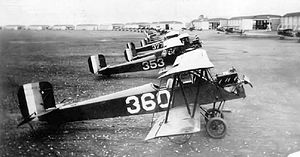
Randolph Air Force Base is a United States Air Force base located at Universal City, Texas.

Brooks Air Force Base was a United States Air Force facility located in San Antonio, Texas, 7 miles (11 km) southeast of Downtown San Antonio.

Kelly Field is a Joint-Use facility located in San Antonio, Texas. It was originally named after George E. M. Kelly, the first member of the U.S. military killed in the crash of an airplane he was piloting.

The 42nd Attack Squadron is a United States Air Force unit assigned to the 25th Attack Group located at Creech Air Force Base near Indian Springs, Nevada. It flew the General Atomics MQ-9 Reaper unmanned aerial vehicle. The 42nd oversaw the training and combat deployment of aerial vehicle and sensor operators assigned to the Reaper.

Carlstrom Field is a former military airfield, located 6.4 miles (10.3 km) southeast of Arcadia, Florida. The airfield was one of thirty-two Air Service training camps established in 1917 after the United States entry into World War I.

The 48th Flying Training Squadron is part of the 14th Flying Training Wing based at Columbus Air Force Base, Mississippi. It operates T-1 Jayhawk aircraft conducting flight training. The squadron is one of the oldest in the Air Force, being formed during World War I as the 48th Aero Squadron on 4 August 1917.

The 101st Bombardment (Photographic) Squadron is an inactive United States Air Force unit. Its last assignment was with the XIX Tactical Air Command, based at Brooks Field, Texas. It was inactivated on 25 December 1945.

The 44th Reconnaissance Squadron is a unit of the United States Air Force's 432nd Wing, Air Combat Command stationed at Creech Air Force Base, Nevada, where it operates unmanned aerial vehicles. The squadron is assigned to the 432nd Operations Group, and has been reported to operate the Lockheed Martin RQ-170 Sentinel.

The United States Army Air Forces during World War II had major subordinate Commands below the Air Staff level. These Commands were organized along functional missions. One such Command was the Flying Training Command (FTC). It began as Air Corps Flying Training Command on 23 January 1942, was redesignated Army Air Forces Flying Training Command (AAFTC) on 15 March 1942, and merged with Army Air Forces Technical Training Command to become Army Air Forces Training Command on 31 July 1943. Continuing service after the war, it was redesignated Air Training Command on 1 July 1946. During the consolidation of Air Force Major Commands in the retrenchment of the 1990s, Air Training Command assumed control of Air University and became Air Education and Training Command on 1 July 1993—today's Air Education and Training Command (AETC), which celebrated its 75th anniversary 23 January 2017. see the Lineage and honors statement for AETC.
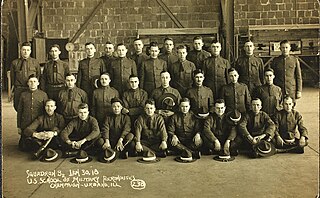
The Flying/Aviation Cadet Pilot Training Program was originally created by the U.S. Army to train its pilots. Originally created in 1907 by the U.S. Army Signal Corps, it expanded as the Army's air assets increased.
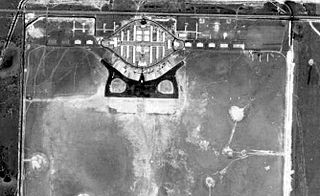
Dorr Field is a former military airfield, located 12 miles (19 km) east of Arcadia, Florida. The airfield was one of thirty-two Air Service training camps established in 1917 after the United States entry into World War I.
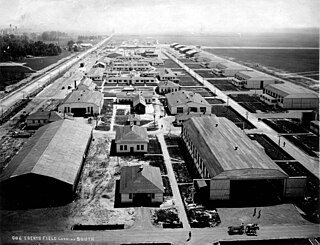
Eberts Field is a former military airfield, located 1.4 miles (2.3 km) northwest of Lonoke, Arkansas. The airfield was one of thirty-two Air Service training camps established in 1917 after the United States entry into World War I.
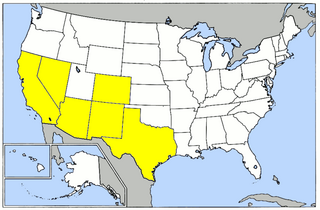
The Army Air Forces Western Flying Training Command (WFTC) was a command of the United States Army Air Forces. It was assigned to the Army Air Forces Training Command, stationed at Santa Ana Army Air Base, California. It was inactivated on 1 November 1945.

The Flying Division, Air Training Command, was a training formation of the United States Air Force. The unit was established in 1926 as the Air Corps Training Center to be the primary pilot training center for the Air Corps. It was reorganized into one of three training commands created by the Office of the Chief of the Air Corps in 1940 to accommodate the large number of air cadets being recruited as a result of the expansion of the corps after the fall of France. During World War II, thousands of cadets attended various flight schools throughout the Central United States being trained as pilots for fighters, bombers and transports. It also trained the navigators, bombardiers and gunners necessary for the bombers to attack enemy targets in the combat areas overseas. After World War II, it became the primary pilot and aircrew training unit of the United States Air Force Air Training Command.

The 22d Intelligence Squadron is a non-flying squadron of the United States Air Force. It is assigned to the 691st Intelligence, Surveillance and Reconnaissance Group, Fort George G. Meade, Maryland.
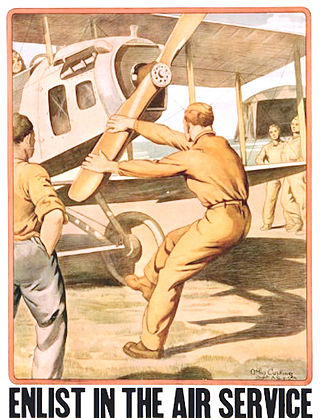
With the purchase of its first airplane, built and successfully flown by Orville and Wilbur Wright, in 1909 the United States Army began the training of flight personnel. This article describes the training provided in those early years, though World War I, and the immediate years after the war until the establishment of the United States Army Air Corps Flight Training Center in San Antonio, Texas during 1926.

The 24th School Wing is a disbanded United States Army Air Corps unit. It was last assigned to the Air Corps Advanced Flying School, and was disbanded on 1 October 1931 at Kelly Field, Texas. While active, the wing served as the headquarters for the Air Corps' three groups training aircrew, which were located in Texas and California.
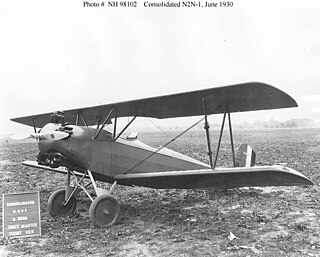
The 13th School Group was a unit of the United States Army Air Corps. It was last assigned to the 24th School Wing, and was demobilized on 30 April 1931 at March Field, California. The unit was an early United States Army Air Corps flying training group, and the first major unit assigned to March Field after its re-opening in 1927.

The 10th School Group is an inactive United States Air Force unit. It was last assigned to the 24th School Wing, and was demobilized on 15 July 1931 at Duncan Field, Texas.

The 54th Airlift Squadron is a United States Air Force squadron stationed at Scott Air Force Base, Illinois. The squadron is an active duty associate unit aiding the 932d Airlift Wing in performance of its airlift mission. The first predecessor of the squadron was formed in August 1917 as the 54th Aero Squadron and served in France during World War II. In 1936, this unit was consolidated with the 54th School Squadron, a pilot training unit that became the 54th Bombardment Squadron, which became a demonstration unit for the Air Corps Tactical School, and later a test and evaluation unit for medium bomber aircraft and tactics.
